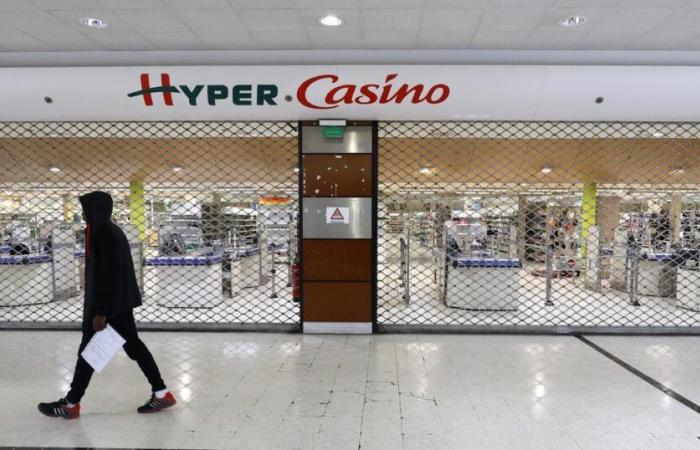Ten years without being able to shop on foot in Grigny, a poor town of nearly 30,000 inhabitants in the southern suburbs of Paris. Since the closure, in 2016, of a large Casino store of 4,000 square meters – the brand had cited too many cases of violence to justify its decision -, the first stone of a supermarket to replace a closed store was laid this Saturday, September 7, with a view to opening in 2026.
And “great pleasure” tinged with relief for Michèle Moncourt, a 75-year-old retired woman from Grignoise. Until today, this resident of the newly built city center had to take the bus to do her shopping at the Leclerc hypermarket in the neighboring town of Viry-Châtillon. “I take what I can, with the strength of my arms, and for the packs of water I wait for the days when my children are available, I am reduced to that”regrets Michèle Moncourt, who has lived in Grigny since 1976.
“Judicial and political marathon”
The project suffered from the lack of candidates to take over from Casino until 2019, when the O’Marché Frais brand (since renamed Marché Frais), mainly located in working-class neighborhoods in the Paris region, agreed to set up in Grigny. But the building permit for this future 5,000 square meter superstore, topped with a parking lot with more than 800 spaces, was the subject of two appeals in 2020 and 2022 by the company managing the Viry-Châtillon hypermarket, concerned about the impact of this project on the footfall of neighboring stores.
Reopening a supermarket represented the promise of revitalizing the new city center, which was supposed to transform a “dormitory town” in “heart of the city”according to the municipality. This area, where several hundred new homes have been created, is intended to connect the working-class districts of Grande Borne and Grigny 2, which is home to one of the largest co-ownerships in Europe, plagued by over-housing and unsanitary conditions. The “judicial and political marathon” undertaken ended with “a victory in our fight for the right to the city”said the (communist) mayor Philippe Rio on Saturday.
The new brand must also be accessible in terms of price. “The desire of the Marché Frais group is to adapt to the area”promises Céline Quattrucci, president of the group co-founded by her husband Bruno Quattrucci. Because “life is expensive” for the city’s residents, says Nora Belgroul, a 54-year-old maintenance worker for the city, who also lives in the new housing developments in the city centre. In her purple dress and matching scarf, holding a petit four, she rejoices with her friends that the brand is also creating jobs. “for young people and mothers” from the corner – 150 after opening according to the municipality.
She also does not have a car to go shopping and relies on her family and friends to accompany her. “We go there together with friends when we do the big shopping for the month”says the woman who admits to having neither the means nor the desire to “disturb friends” to do their shopping every week. For those who live a little further away, a solution has already been found: since December, the T12 tramway that connects Massy to Evry stops less than ten minutes’ walk from the future supermarket.






